GrabCAD
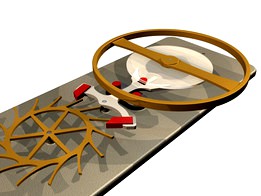
Classic Escapement - Swiss Lever
by GrabCAD
Last crawled date: 1 year, 10 months ago
Based on the book CLOCK AND WATCH ESCAPEMENT MECHANICS by Mark V. Headrick (Copyright 1997) as a fine source, I try to present rigorously the essence of escapement design. The book is public (http://www.nawcc-index.net/Articles/Headrick-EscMechanics.pdf), so you can read and compare (with the book) everything I present here. My intention was to create a series of projects dedicated to this subject - as you will see - but only concerning the geometrical aspects. Actually, you can use my projects as accurate simulations for understanding the book. I recommend you to download the book in order to use it when your computer is offline. As you can learn from the book, there are three classical kinds of escapement mechanisms: Graham (dead-beat), Recoil and the Swiss Lever. Here is presented the last one.
There are two different words in English as names for the mechanical device used for counting the time: clock and watch. In Romanian, for instance, there is only one word for both: the Romanian word is „ceas” (read as „charts” without „rt”). A watch is not a clock, like a pendulum clock hanged on the wall; a wrist watch is a good example from the family of watches. The Swiss Lever is used as an escapement for watches.
The construction of the Swiss Lever Escapement is presented in the book from the page 44. It commences with the Wheel, then the Swiss Lever. If you follow the book till the end you will obtain what I already modeled. All parts, assemblies and simulation/animation are made with Inventor 2014. The main parts are the Wheel, the swiss Lever which incorporate the so called „Stones” presented in red. Next is the Balance Wheel Disc incorporating the red Impulse Pin. All of them are placed on a Plate. There you can find also the Banking Pins which limit the movement of the Swiss Lever.
Watching the Video, you can see the start of movement: note that the Wheel is the engine which make the Swiss Lever to move. Then, you will see how the Swiss Lever collides the Impulse Pin and feeds the Balance Wheel with energy at every single oscillation. The role of the Balance Wheel is obvious: to conserve energy for coming back and making the Swiss Lever to allow the rotation of the Wheel with another one step.
Because the classic spiral spring attached to the Balanced Wheel can not be simulated with Dynamic Simulation in Inventor, I simulated the spiral spring action by using a helicoidal spring and a subtle construction. You can see it on the back of Plate or in the movie here: https://youtu.be/1_o7qbnzcAA
If you want to see more, look here:
Infinite Kinetic simulation: http://uhrentechnik.vyskocil.de/fileadmin/ani/anker%28ch%29_0701.swf
Model under glass: https://youtu.be/heAS0L1jANs
Watch kinematic chain: https://youtu.be/dao0mbAbNLE
Ultimate Swiss creation: https://youtu.be/MQJFRt-2hDk
Enjoy!
There are two different words in English as names for the mechanical device used for counting the time: clock and watch. In Romanian, for instance, there is only one word for both: the Romanian word is „ceas” (read as „charts” without „rt”). A watch is not a clock, like a pendulum clock hanged on the wall; a wrist watch is a good example from the family of watches. The Swiss Lever is used as an escapement for watches.
The construction of the Swiss Lever Escapement is presented in the book from the page 44. It commences with the Wheel, then the Swiss Lever. If you follow the book till the end you will obtain what I already modeled. All parts, assemblies and simulation/animation are made with Inventor 2014. The main parts are the Wheel, the swiss Lever which incorporate the so called „Stones” presented in red. Next is the Balance Wheel Disc incorporating the red Impulse Pin. All of them are placed on a Plate. There you can find also the Banking Pins which limit the movement of the Swiss Lever.
Watching the Video, you can see the start of movement: note that the Wheel is the engine which make the Swiss Lever to move. Then, you will see how the Swiss Lever collides the Impulse Pin and feeds the Balance Wheel with energy at every single oscillation. The role of the Balance Wheel is obvious: to conserve energy for coming back and making the Swiss Lever to allow the rotation of the Wheel with another one step.
Because the classic spiral spring attached to the Balanced Wheel can not be simulated with Dynamic Simulation in Inventor, I simulated the spiral spring action by using a helicoidal spring and a subtle construction. You can see it on the back of Plate or in the movie here: https://youtu.be/1_o7qbnzcAA
If you want to see more, look here:
Infinite Kinetic simulation: http://uhrentechnik.vyskocil.de/fileadmin/ani/anker%28ch%29_0701.swf
Model under glass: https://youtu.be/heAS0L1jANs
Watch kinematic chain: https://youtu.be/dao0mbAbNLE
Ultimate Swiss creation: https://youtu.be/MQJFRt-2hDk
Enjoy!
Similar models
grabcad
free

Classic Escapement - Recoil (Brocot)
...looking to the remarkable simulation of ken kuo, and reading the documented description here: https://youtu.be/vh1rh6wgv60
enjoy!
grabcad
free

Classic Escapement - Recoil (Common)
...utu.be/poie2rmdn6k (little recoil)
professional adjustment of the entrance drop: https://youtu.be/q6hc31fen2i (noticeable recoil)
grabcad
free

Swiss Lever Watch Escapement Model
...stment to beat rate, beat error and pallet banking.
approximate run time is 30 seconds per 1 meter drop of the mechanism weight.
thingiverse
free

updated Escapement Spring for 3D printed mechanical Clock with Anchor Escapement by downeym
...on my printed clock. as you can see, it works better now: http://youtu.be/9-isafyfmag
thanks to thegoofy for such a great design.
grabcad
free

Classic Escapement - Graham (Modified)
...see an increase of the amplitude of palette oscillation. this can be adjusted by changing the length of the pendulum rod.
enjoy!
thingiverse
free

Minute Engine by brlaw
...unction, see link below for full instructions.
https://brianlawswoodenclocks.blogspot.com/2020/09/a-design-for-minute-engine.html
grabcad
free

Classic Escapement - Graham (Ideal)
... the other way is to manually insert the joints, and entering/leaving the dynamic simulation seems to be more complicated.
enjoy!
thingiverse
free

Dual Ulysse Escapement Test Jig by A26
...ditional 2mm metal shafts) for balance staff and balance spring pin
see it in action: https://www.youtube.com/watch?v=0am1bvugcfk
3dwarehouse
free

Wooden Wheel Clock
...ck
3dwarehouse
early swiss wooden wheel clock google books, popular mechanics, august 1964 #clock #sketchyphysics #swiss #wooden
grabcad
free

Swiss Lever Escapement
...: i did the motion study successfully finally. you can see the video at youtube:) and i will update file with motion study later.
Swiss
3d_export
$95

Falcon3D A340 600 Swiss Air 3D Model
...win jet civil civilian jetliner a340 a-340 a-340-600 a340-600 airbus
falcon3d a340 600 swiss air 3d model falcon3d 69964 3dexport
3d_export
$99

Watch 9 3D Model
...emboss yacht skipper yh2wr4 clockwork watch gear wristwatch constantin swiss geneve gears mechanical isochronism parts chronograph exploded people watch...
3d_export
$849
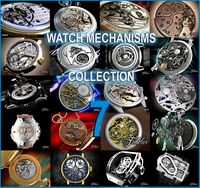
Watch mechanisms coll 7 3D Model
...coll 7 3d model 3dexport clockwork watch gear wristwatch swiss gears mechanical isochronism parts chronograph people accessories collection value...
cg_studio
$129

Watch mechanism 193d model
...mechanism 193d model cgstudio time clockwork watch gear wristwatch swiss geneve gears mechanical isochronism parts chronograph people tourbillon clock...
cg_studio
$99

Watch mechanism 20 no textures3d model
...no textures3d model cgstudio time clockwork watch gear wristwatch swiss geneve gears mechanical isochronism parts chronograph people tourbillon clock...
cg_studio
$129

Watch mechanism 203d model
...mechanism 203d model cgstudio time clockwork watch gear wristwatch swiss geneve gears mechanical isochronism parts chronograph people tourbillon clock...
cg_studio
$129

Watch 273d model
...watch 273d model cgstudio time clockwork watch gear wristwatch swiss geneve gears mechanical isochronism parts chronograph people tourbillon clock...
cg_studio
$99

Watch 28 no textures3d model
...no textures3d model cgstudio time clockwork watch gear wristwatch swiss geneve gears mechanical isochronism parts chronograph people tourbillon clock...
cg_studio
$129
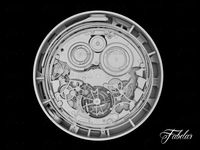
Watch 31 no textures3d model
...no textures3d model cgstudio time clockwork watch gear wristwatch swiss geneve gears mechanical isochronism parts chronograph people tourbillon clock...
cg_studio
$99

Watch 25 no textures3d model
...no textures3d model cgstudio time clockwork watch gear wristwatch swiss geneve gears mechanical isochronism parts chronograph people tourbillon clock...
Escapement
3ddd
$1
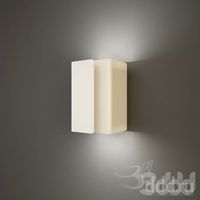
Artificia / Cube
...ntral blade stimulating new sensitive experiences.http://www.artificiailluminazione.com/?post_type=portfolio&p;=511
3d_ocean
$89

Ford Escape 2012
...y, in real units of measurement, qualitatively and maximally close to the original. model formats: - *.max (3ds max 2008 scanl...
3d_ocean
$12

Fire Escape Stairs Low Poly
... of textures: green, red and gray. the 3d model includes a texture that is 3000×3000 in size. specular and bump map included. ...
3d_ocean
$89

Ford Escape 2013
...y, in real units of measurement, qualitatively and maximally close to the original. model formats: - *.max (3ds max 2008 scanl...
3d_ocean
$7

Detailed High Poly Fire Escape
...alization. the level of detail is just enough to gain photo realistic result (when textured) and not too much to overload game...
3d_ocean
$89

Ford Kuga 2012
...y, in real units of measurement, qualitatively and maximally close to the original. model formats: - *.max (3ds max 2008 scanl...
3d_ocean
$9

Deserted School
...the soviet union classic school building. 2-storeyed walk-through building with the stairs, fire-escapes three textures 1024×1024
cg_studio
$169

Ford Escape with HQ interior 20133d model
....lwo .max .mb .obj - ford escape with hq interior 2013 3d model, royalty free license available, instant download after purchase.
cg_studio
$99

Ford Escape 20123d model
...
.3ds .c4d .fbx .lwo .max .mb .obj - ford escape 2012 3d model, royalty free license available, instant download after purchase.
cg_studio
$99

Ford Escape 20133d model
...
.3ds .c4d .fbx .lwo .max .mb .obj - ford escape 2013 3d model, royalty free license available, instant download after purchase.
Lever
3ddd
$1

Disegno Ceramica Neo
...730х265 арт. ne01100001 кран: perrin and rowe mimas single lever sink mixer...
3ddd
$1

Kohler Triton® Shelf-back double wristblade lever handle sink faucet with loose-key stops
... смеситель
медицинский (хирургический) смеситель
height 8-7/16"
length 7-5/8"
width 8"
k-7308-5a-cp
3ddd
$1
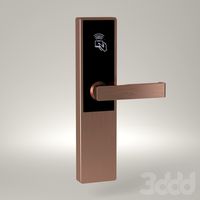
Door Lock
...lock touch screen password door lock mf card key lever ...
3ddd
$1

BLANCO - KANTOS
...3ddd blanco - kantos , blanco , смеситель single lever mixer: blanco soap button: blanco waste disposer button: blanco...
3ddd
$1
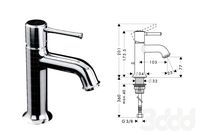
Hansgrohe Talis Classic
...classic 3ddd hansgrohe , talis hansgrohe talis classic single lever basin mixer 80 quad poly...
3ddd
$1

Axor
...axor 3ddd axor , смеситель axor starck semi-pro single lever ...
3d_ocean
$13

Blackpool T Table by Satelliet
...blackpool t table by satelliet 3docean blackpool grey industrial lever metal nuts original rods rough rusty satelliet stretcher table...
3d_ocean
$7

Lefroy Brooks Basin Mixer Tap M1-1101 (ML 1228)
...3docean 3d bath bathroom brooks c4d chrome flow lefroy lever metal mixer obj realistic tap water general this is...
3d_ocean
$2

Low Poly LEVER NR.2
... a leaver. textures: 1024×1024 includes psd file for easy editing of colors in texture map. scene does not contain render setup.
3d_ocean
$2

Low Poly LEVER NR.1
... a leaver. textures: 1024×1024 includes psd file for easy editing of colors in texture map. scene does not contain render setup.
Classic
3d_export
$99
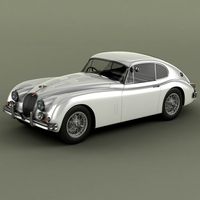
Jaguar XK150 S Fastback 3D Model
...jaguar xk150 s fastback 3d model 3dexport car classic antique jaguar xk 150 xk150 sport coupe fastback hartin...
3d_export
$99

Buick Skylark convertible 1964 3D Model
...3d model 3dexport buick skylark 1964 1965 1966 1967 classic 2-door coupe sport convertible general motors us american buick...
3d_export
$99

Chevrolet El Camino 1959 3D Model
...3dexport chevrolet el camino 1959 1960 chevy 2-door coupe classic vintage utility pickup us american chevrolet el camino 1959...
3d_export
$45

Ferrari 250 Testa Rossa 1957 3D Model
...gt testarossa testa rossa race racing vintage antique oldtimer classic retro racer italy italian supercar expensive legendary legend ferrari...
3d_export
$149

Jupiter Steam Train 1868 3D Model
...jupiter steam train 1868 3d model 3dexport classic oldtimer vintage antique retro usa historic famous 60 wild...
3d_export
$99

Jeep Wrangler 2008 mid poly 3D Model
...wrangler 2007 2008 rubicon offroad 4x4 fun car usa classic terrain midpoly mid-poly jeep wrangler 2008 mid poly 3d...
3d_export
$129
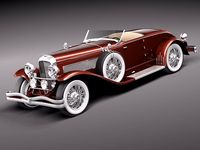
Duesenberg SJ Roadster 1935 3D Model
...convertible cabrio roadster royal luxury expensive exclusive slyle oldtimer classic vintage antique 1932 1933 duesenberg sj roadster 1935 3d...
3d_export
$12
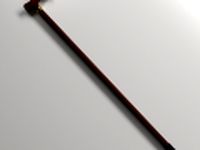
Walking Canes 3D Model
...camping support disabled staff aid balancing trekking poles gentlemen classic old walking canes 3d model firdz3d 73124...
3d_export
$15

American Racing Classic 200S 16 inch Rim 3D Model
...lly 16 inch style muscle 60s stylish oldsmobile chevy
american racing classic 200s 16 inch rim 3d model zenmunster 93150 3dexport
3d_export
$10

Corinthian capital 3D Model
...column ornament greek antique corinthian architecture decor decoration acanthus classic corinthian capital 3d model da_grog 32884...
